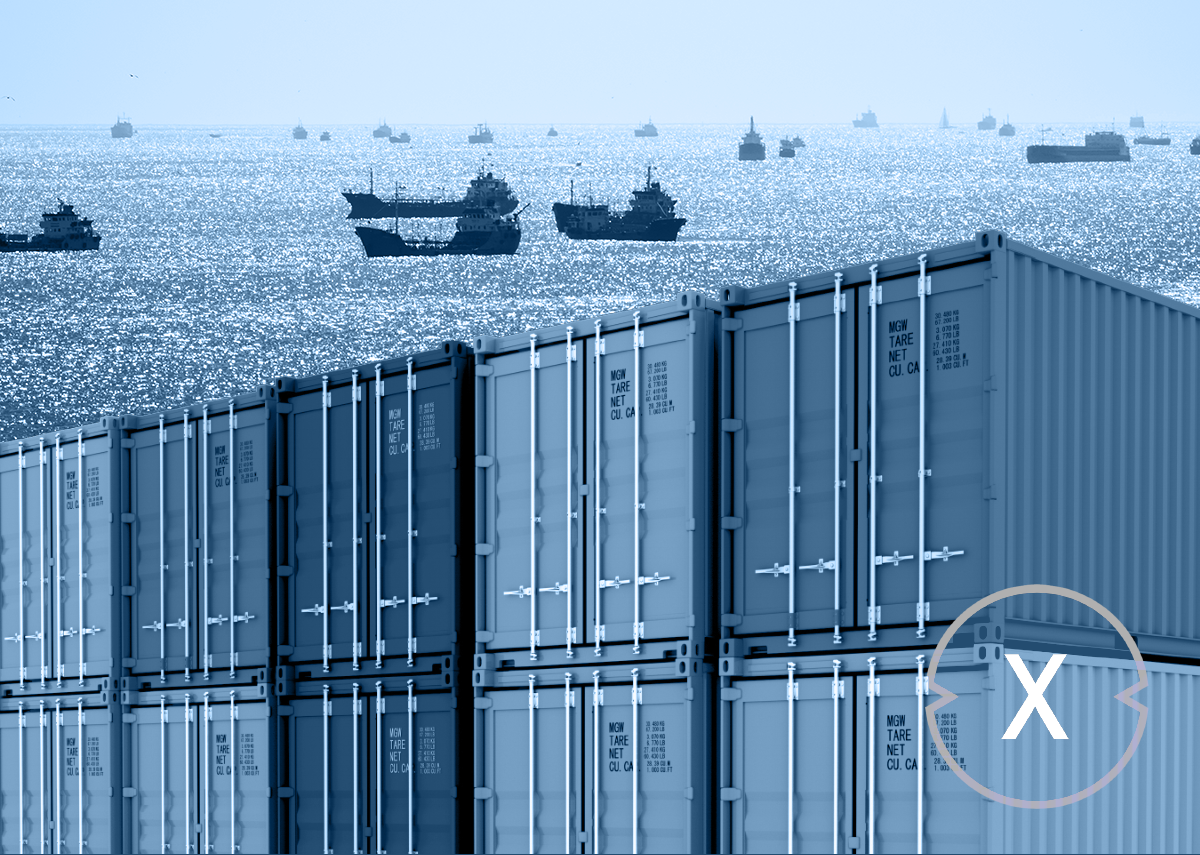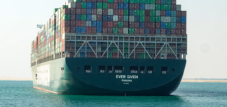
Fragile global supply chains and no end: Ship traffic jam off Shanghai – Image: Xpert.Digital / topae & PeskyMonkey|Shutterstock.com
Global supply chains at the limit
German industry is bracing for potentially serious consequences due to a ship jam in the world's largest container port in Shanghai
Many cargo and container ships are jammed in front of the port of the Chinese metropolis Shanghai. This is shown by the graphic based on a current map section from Fleetmon, an online tracking portal for ships. The reason for the traffic jam is the hard lockdown that the Chinese government has imposed on the city. The port employees are also affected by this, which is why the largest port in the world currently has to make do with significantly fewer staff.
German industry is preparing for possibly serious consequences due to a ship in the world's largest container port in Shanghai. Industrial President Siegfried Russwurm told the German Press Agency in Berlin: “German industry fears production processes in the coming weeks. Especially sectors are affected on raw material or component deliveries as well as the shipping of their finished products via sea transport. ”
In terms of container throughput, the port in Shanghai is the largest port in the world. 47 million TEU (Twenty-foot Equivalent Unit, a unit of measurement for container sizes) were handled there last year. The largest European port is in Rotterdam - 15.3 million TEU were handled there. In Germany, the port of Hamburg recorded the largest volume of goods handled. Around 111 million tons of goods were handled there in 2021. This puts the port of Hamburg well ahead of the ports of Bremerhaven and Wilhelmshaven. The graphic below provides an overview of the largest cargo ports in the world.
Fleetmon uses the ships' Automatic Identification Systems (AIS) signals to display traffic volume. These are used in shipping to exchange navigation data via radio. Every ship over 20m must broadcast an AIS signal. It sends, among other things, nickname, ship type, GPS position, dimensions and similar data.
English Version: China | Fragile global supply chains and no end in sigh - ship congestion off Shanghai
German industry is bracing itself for potentially serious consequences due to a shipping jam at the world's largest container port in Shanghai
Many cargo and container ships are jammed up in front of the port of the Chinese metropolis Shanghai. This is shown in the graphic based on a current map section from Fleetmon, an online tracking portal for ships. The reason for the congestion is the tough lockdown imposed on the city by the Chinese government. This also affects port employees, which is why the world's largest port currently has to manage with significantly fewer staff.
German Industry is Bracing Itself for Potential Serious Consquences Due to a Shipping Jam at the World's Largest Container Port in Shanghai. Industry President Siegfried Russwurm Told the German Press Agency in Berlin: “German Industry Fears Disrupt Production Processes in the Coming Weeks. Particularly affected are industries that rely on raw material or constructation component deliveries as well as the shaft of their finished products via Sea Transport. ”
In terms of container throughput, the port in Shanghai is the largest port in the world. 47 million TEUs (Twenty-foot Equivalent Unit, unit of measure for container sizes) were handled there last year. The largest European port is in Rotterdam – 15.3 million TEU were handled there. In Germany, the Port of Hamburg recorded the largest cargo throughput. Around 111 million tons of goods were handled there in 2021. This puts the Port of Hamburg well ahead of the ports of Bremerhaven and Wilhelmshaven. The chart below provides an overview of the world's largest cargo ports.
Fleetmon uses Automatic Identification Systems (AIS) signals from ships to display traffic volumes. These are used in shipping to exchange navigational data via radio. Every vessel over 20m must transmit an AIS signal. It transmits, among other things, call name, vessel type, GPS position, dimensions and similar data.
Need for action to ensure supply chains continue to function
Fragile supply chains: Supply chain under pressure – Image: Xpert.Digital / Travel mania|Shutterstock.com
Global supply chains are still strained by the pandemic. Many countries have introduced numerous anti-pandemic measures, which have caused severe delays in value and supply chains. For example, control and quarantine zones in logistical hubs have led to delivery backlogs of goods. As a result, many supplier companies were hindered in their production and were no longer able to fully meet their delivery obligations. And missing supplier parts can quickly have a massive impact on production processes. Added to this are the absence of workers due to illness or travel restrictions.
Supply chain on the brink? The delivery difficulties and solutions
Is the global supply chain torn apart by ongoing problems and regional crises? – Image: Xpert.Digital / Iaroslav Neliubov|Shutterstock.com
We recently wrote about it: “As has already been described countless times, globalization has put a lot of strain on the supply chain structure and made it vulnerable to unexpected and unexpected crises beyond its control. But also in the relatively short time there was no strategic awareness. This means that there is no relaxation in sight along the supply chain in logistics or intralogistics in the future either.”
Now it's time to act. Anyone who does it now is late - and there are quite a few of them! As early as 2012, 16.2% of the companies surveyed stated in a survey that they had no solutions or strategies for supply chain risk management. A reaction should be made now at the latest, because the current situation will continue. And what many people don't even consider: the danger of a chain reaction and the possible consequences of further crises resulting from it are real. Can anyone seriously say this is it?
Logistics Library (PDF)
Data is viewed at regular intervals and checked for relevance. This usually brings together some interesting information and documentation, which we combine into a PDF presentation: our own data analyzes and marketing intelligence as well as external market observations.
Fragile global supply chains and no end: Ship traffic jams at Europe's ports of Rotterdam and Antwerp
Ship traffic jam in front of Europe's ports of Rotterdam and Antwerp - Image: FabianIrwin|Shutterstock.com
Global supply chains are still strained by the pandemic. Many countries have introduced numerous anti-pandemic measures, which have caused severe delays in value and supply chains. For example, control and quarantine zones in logistical hubs have led to delivery backlogs of goods. As a result, many supplier companies were hindered in their production and were no longer able to fully meet their delivery obligations. And missing supplier parts can quickly have a massive impact on production processes. Added to this are the absence of workers due to illness or travel restrictions.
Xpert.Digital – Konrad Wolfenstein
Xpert.Digital is a hub for industry with a focus on digitalization, mechanical engineering, logistics/intralogistics and photovoltaics.
With our 360° business development solution, we support well-known companies from new business to after sales.
Market intelligence, smarketing, marketing automation, content development, PR, mail campaigns, personalized social media and lead nurturing are part of our digital tools.
You can find out more at: www.xpert.digital – www.xpert.solar – www.xpert.plus

